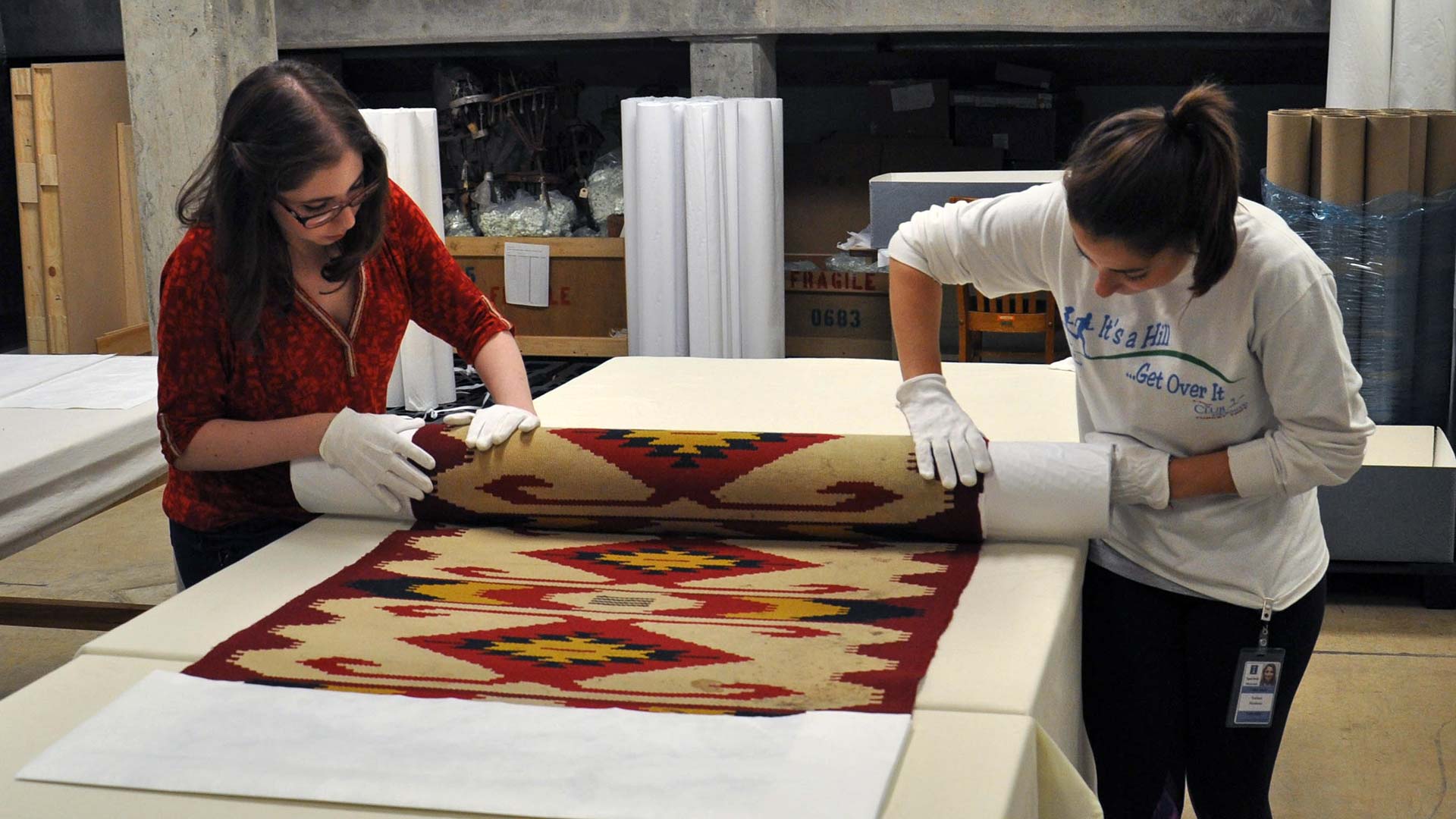
Textile Rolling and Reorganization
- Post Date: 04/14/2016
- Author: John Holton
- Reading Time: 2 minute read
As the Spurlock’s artifact collection continues to grow, our staff actively evaluates our storage systems to figure out how to best house objects in ways that both meet preservation requirements and also maximize space efficiency. With the acquisition of textiles in recent years—including over 800 Guatemalan pieces from the Kieffer-Lopez Collection—the Collections staff is reorganizing large pieces to improve storage. We estimate that this systematic reorganization and expansion of rolled storage will increase our hanging capacity by 44%!
The Museum uses a unique system of hanging tubes to roll and store large textiles. Rolling is often preferred to folding because folding weakens and destroys fibers in the artifacts over time, and our system ensures that really big pieces like rugs, blankets, and saris can be stored safely. It also means that our limited storage shelf and drawer space are freed up to be used more efficiently to house other smaller artifacts.
-
 Collections Assistants Scarlett Andes and Tatiana Niculescu roll a Navajo rug (1996.24.0638) for storage.
Collections Assistants Scarlett Andes and Tatiana Niculescu roll a Navajo rug (1996.24.0638) for storage.
Rolling the textiles for storage is a time-consuming and delicate physical process. Staff start by filling out condition reports on the selected textiles, which are then cleaned and photographed. At the same time, we prepare the storage solution by sealing custom-cut cardboard cores with aluminum foil to prevent the migration of acid from the cardboard to the artifacts. On top of the foil, we put layers of acid-free tissue paper to provide a safe surface for the textile. After the textile is gently rolled around the core, the whole unit is finally wrapped in a muslin dust cover and hung on a wall unit using stainless steel tubing. We write each artifact’s accession number on a tag affixed to the ties around the dust cover so that anyone looking for a textile can find it without disturbing any others.
This is a long-term project—we hope to be done reconfiguring our rolled textile storage by the fall semester of 2017.
-
- Share: 𝕏
- Subscribe to Newletter
- Giving